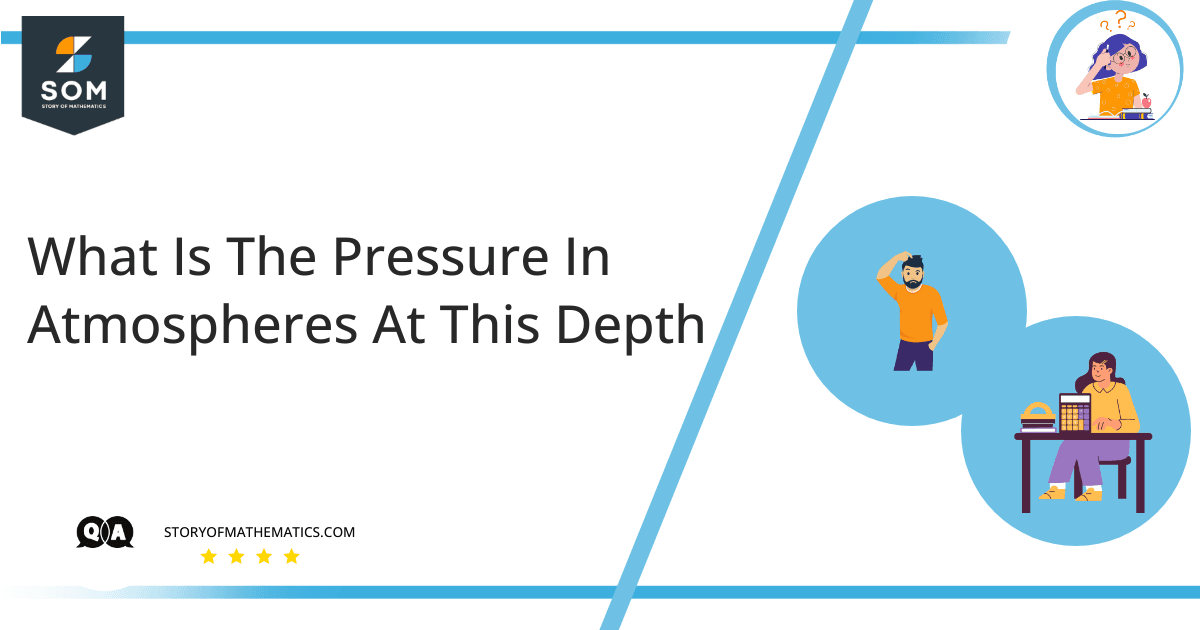JUMP TO TOPIC

This question aims to find the atmospheric pressure given the depth of a point.
The pressure of the atmosphere on the surface is defined as atmospheric pressure. It is measured in atm (atmosphere), whereas at the sea level, the average pressure is taken to be $1$ atm. It is also known as barometric pressure or the force applied to the unit area by an atmospheric column, meaning the whole body of air upon a particular region.
In many cases, the hydrostatic pressure, that is, the pressure exerted by the air weight beyond the point of measurement, is used to approximate the atmospheric pressure. The air pressure is measured by a barometer. Mercury and aneroid are its types.
A mercury thermometer is a large tube containing a mercury column, and the tube is placed upside down in a mercury bowl. The air exerts pressure on the mercury in the bowl, preventing it from escaping through the tube. As pressure rises, mercury is forced upwards into the tube. Whenever the air pressure drops, so does the level in the tube.
Expert Answer
Let $\rho$ be the density of water, then:
$\rho=1029\,kg/m^3$
Let $P_0$ be the atmospheric pressure, then:
$P_0=1.01\times 10^5\,Pa$
Let $h$ be the given depth, then:
$h=11\,km$ or $h=11\times 10^3\,m$
Let $P$ be the pressure at the deepest point, then:
$P=\rho g h$
Where $g$ is taken to be $9.8\,m/s^2$
$P=1029\times 9.8\times 11\times 10^3$
$P=1.11\times 10^8\,Pa$
Now, $\dfrac{P}{P_0}=\dfrac{1.11\times 10^8\,Pa}{1.01\times 10^5\,Pa}$
$\dfrac{P}{P_0}=1099$
So, the net pressure is given by:
$P+P_0=1099+1=1100\,atm$
Example 1
Find the pressure at the base of a vessel containing a fluid with density $2.3\, kg/m^3$. The height of the vessel is $5\,m$ and is sealed.
Solution
Let $P$ be the pressure, $\rho$ be the density, $g$ be the gravity and $h$ be the height, then:
$P=\rho g h$
here, $\rho=2.3\, kg/m^3$, $g=9.8\,\,m/s^2$ and $h=5\,m$
So, $P=(2.3\, kg/m^3)(9.8\,\,m/s^2)(5\,m)$
$P=112.7\,kg/ms^2$ or $112.7\,Pa$
Thus, the pressure at the base of the vessel is $112.7\, Pa$.
Example 2
Consider the same density and height of the vessel as in example 1. Calculate the pressure at the base of the vessel if it is not sealed and is open.
Solution
Since the vessel is open, therefore the atmospheric pressure will also be exerted at the top of the open vessel. Let $P_1$ be the atmospheric pressure, then:
$P=P_1+\rho g h$
Now, $\rho g h=112.7\,Pa=0.1127\,kPa$
Also at sea level, the atmospheric pressure is $101.325\,kPa$.
Therefore, $P=101.325\,kPa+0.1127\,kPa=101.4377\,kPa$
Thus, the pressure at the base of the vessel is $101.4377\,kPa$ when it is not sealed.
